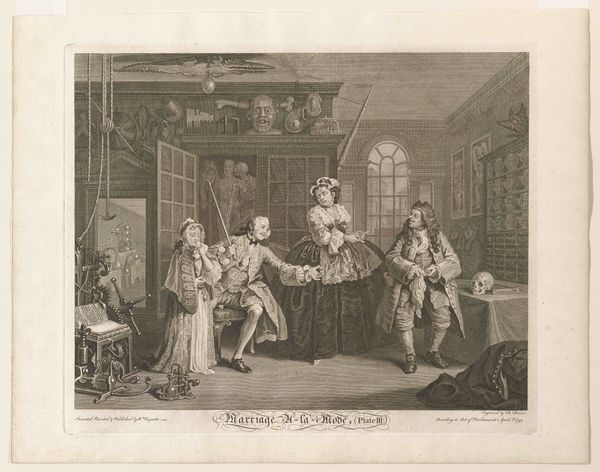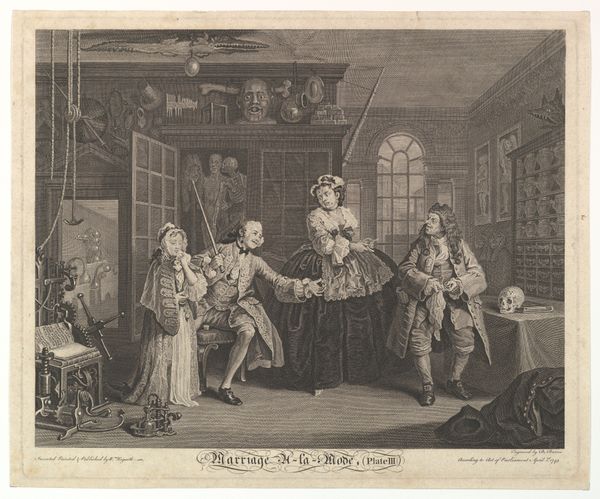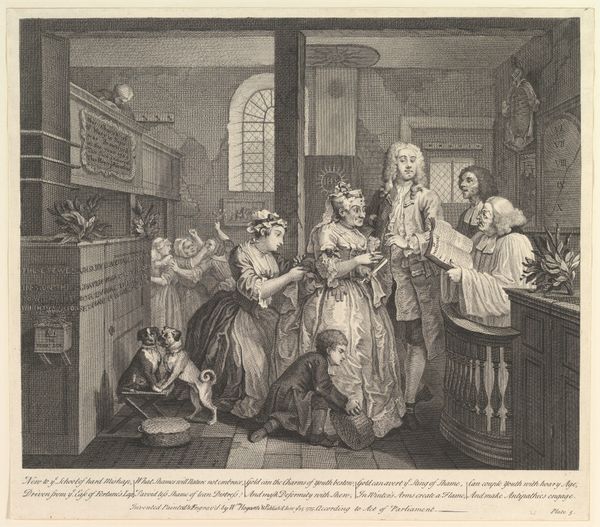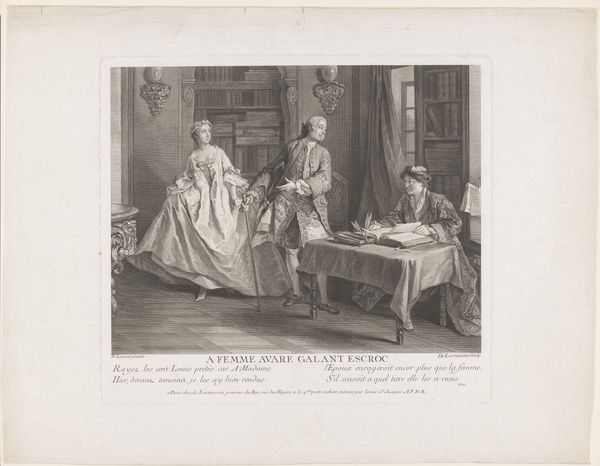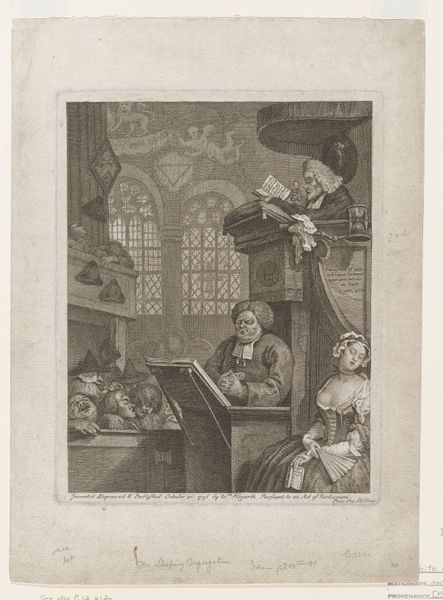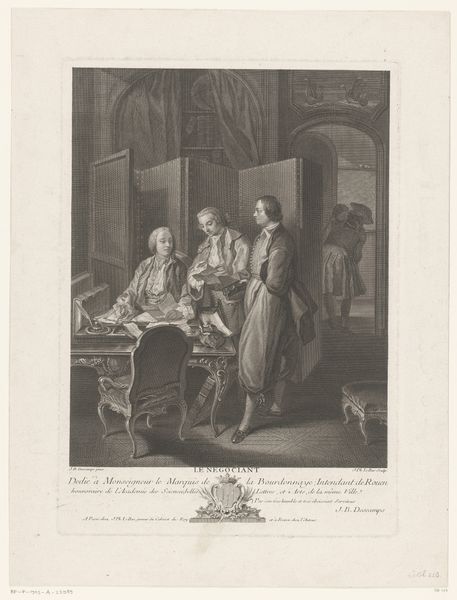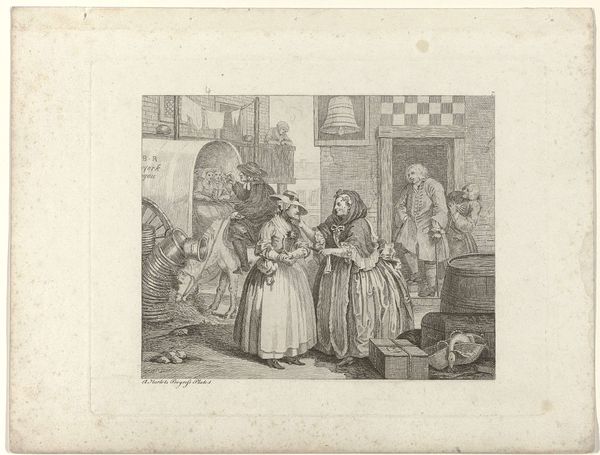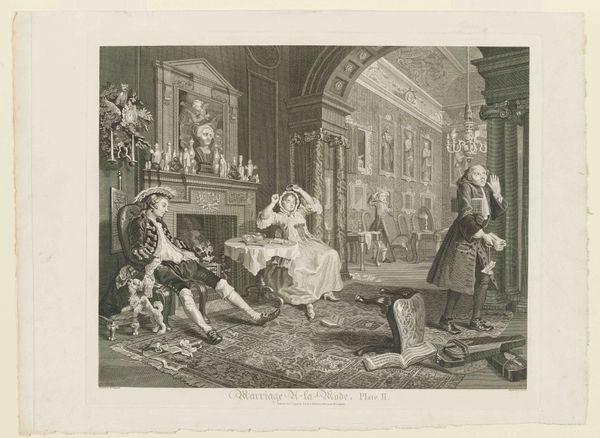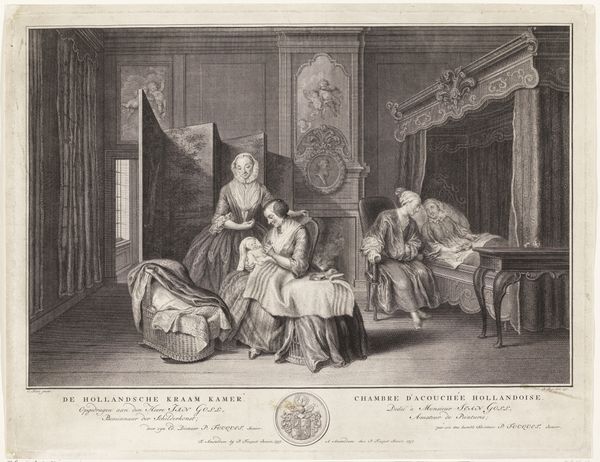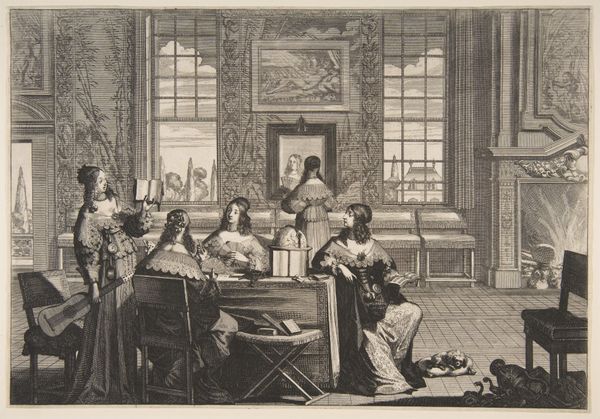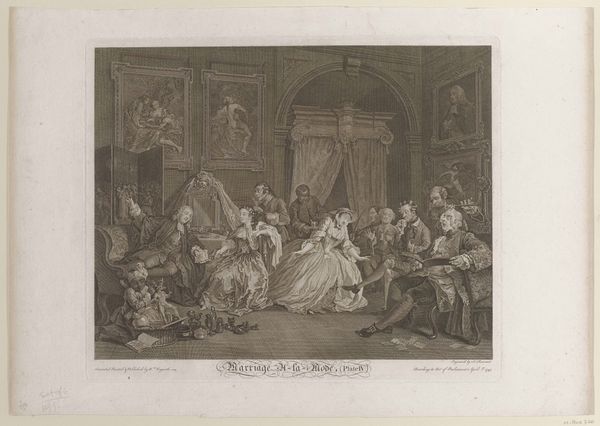
Dimensions: 15 1/16 x 18 1/2 in. (38.3 x 47 cm) (plate)
Copyright: Public Domain
Editor: This is "Plate III from Marriage A-La-Mode," an engraving by William Hogarth, dating back to 1796-1797. The scene feels so staged and rife with tension! What is your interpretation of this print? Curator: Well, considering the historical context, we see Hogarth engaging in a pointed social critique. The "Marriage A-la-Mode" series, in its entirety, serves as a commentary on the arranged marriages of the 18th-century English gentry and aristocracy, focusing particularly on the consequences of marrying for status or wealth rather than love. What do you notice about the composition and the details within the room itself? Editor: It’s chaotic. There’s a jumble of objects, a figure exiting on the left… And is that a dog wearing a cone? There’s a feeling of excess and… decay, maybe? Curator: Precisely. Consider how Hogarth uses satire to expose the moral corruption he perceived within the upper classes. The presence of exotic items and classical busts, contrasted with the obvious disarray, speaks to a superficial interest in culture and learning. And yes, even the dog becomes part of the satire, a reflection on the characters' absurd and artificial world. How do you think this particular scene fits into the overall narrative? Editor: I guess, looking at it that way, this scene is the unraveling. It depicts a crucial point where the cracks in their arrangement become undeniable and very public. It's less about individuals, and more about the system that creates this kind of situation? Curator: Exactly. Hogarth held a mirror up to society and its institutions. Understanding his work means recognizing that social function, the intended public effect, and his place in popular political discourse. What do you take away from it all now? Editor: Now, I realize how deeply entrenched social commentary can be within seemingly simple domestic scenes. Curator: Absolutely, it emphasizes how artists throughout history engage in the socio-political realities that influence art’s role in society and shape audience perspectives.
Comments
No comments
Be the first to comment and join the conversation on the ultimate creative platform.
